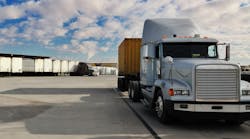Tomorrow's transmissions
"The most notable trend will be the growth of automated shifting technologies."
Emerging trends among fleets and markets will accelerate the growing demand for advanced transmission technologies. But the result will be transmissions that are more responsive to each fleet's specific needs. The most notable trend will be the growth of automated shifting technologies. Roughly half the medium-duty vehicles sold today in North America have automatic or automated transmissions. Since the market forces creating the need for shift-free driving are growing, so will the demand for technologies that provide this benefit.
Especially in the medium-duty market, drivers with extensive commercial driving experience are at a premium. If the projections for the growth of this segment are correct, this shortage will become even more acute. The solution is to expand the pool of available drivers. The fastest way to do this is by making vehicles easier to operate. And eliminating the need to manually shift is one of the most effective ways to simplify driving.
This is why fleets are demanding automated shifting technologies. But which technologies can deliver the best combination of driving ease and operating efficiency? We believe the best solutions for fleets lie in automated mechanical transmissions and CVTs (continuously variable transmissions). These technologies will provide greater efficiency and reduced maintenance, which will result in lower overall operating costs.
Automated mechanical transmissions allow engineers to combine the simplicity, cost-effectiveness, and familiarity of traditional manual transmissions with the flexibility and driver-friendliness of automatics. Automated systems produce smooth, precise shifts that maximize the transmission's operating efficiency for better fuel economy.
At the same time, the optimized shifting reduces driveline shock and clutch wear. Automation also permits fleets and dealers to "tune" a transmission by electronically programming operating characteristics to deliver the exact blend of acceleration, smoothness, and fuel economy desired for each application.
CVT technology also holds great promise. CVTs permit engines to operate in a very narrow rpm band, thereby improving fuel economy while reducing emissions. And CVTs eliminate manual shifting. Current CVT limitations, such as inability to handle high torque loads, will certainly be overcome. Once they are, market demand for CVTs will quickly grow, rapidly creating economies of scale that will make CVTs more affordable.
However, there will still be a market for manual transmissions well into the foreseeable future. With the lowest acquisition cost, they offer great economy. And with a skilled driver, the efficiency of a manual transmission is hard to beat.
TTC has chosen to respond to the market's challenges by concentrating exclusively on transmissions. By focusing all our resources on transmissions, we can respond more quickly to changing customer needs and emerging technologies. Being a transmission-specific supplier, we produce a wider range of transmission products, which creates synergistic benefits.
Suppliers will invest in customer service programs, as well as technological advancements. They'll have to. Because expectations for transmission reliability, durability, efficiency - and total lifecycle value - will continue to rise.


